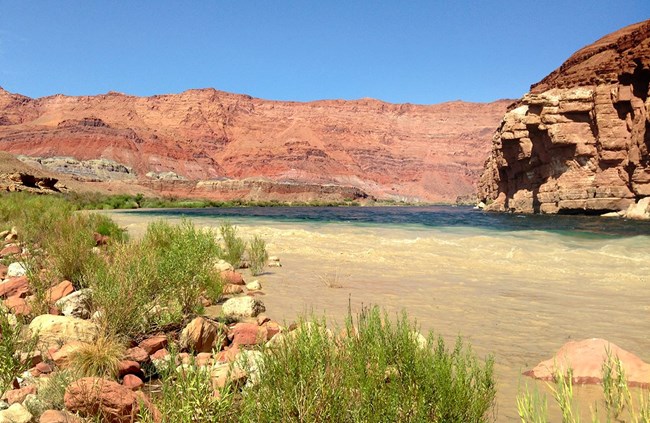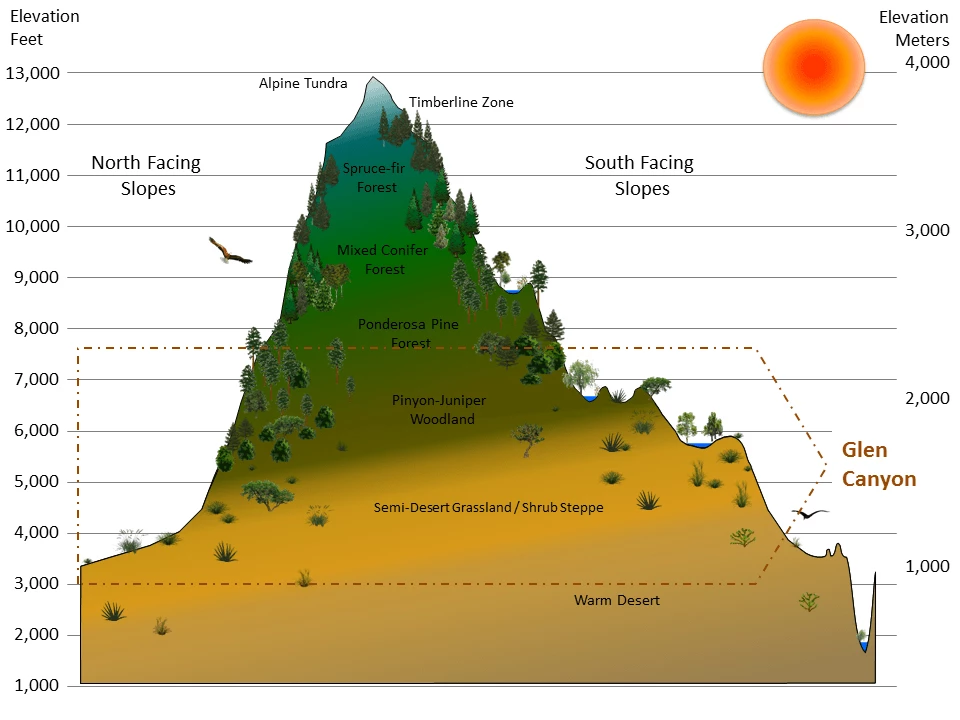
NPS
Glen Canyon National Recreation Area encompasses Lake Powell , the second largest man-made lake in North America, and covers over 1.25 million acres (505,868 ha) in southern Utah and northern Arizona. It was established in 1972 by an Act of Congress to provide for public recreational use of Lake Powell and adjacent areas, as well as to protect the areas scenic, scientific, and prehistoric and historic features.
Lake Powell comprises only 13% of the recreation area–the remainder consists of upland desert incised by deep canyons, dry washes, and steep cliffs with areas of clay or slickrock badlands.
The bench and upland areas of Glen Canyon NRA support a wide variety of Colorado Plateau plant communities, ranging from the dominant cold desert shrub and shrub-steppe to cottonwood, willow, and tamarisk groves near flowing water, and pinyon-juniper woodland at higher elevations.
Vegetation is complex, especially in riparian zones and springs, with a total of 37 vegetation communities documented in the recreation area. Glen Canyon NRA provides habitat for a diverse array of faunal species, which include 7 amphibian, 311 bird, 64 mammal, 27 fish, and 27 reptile species.
Water resources include the Colorado River and Lake Powell, a number of perennial rivers that flow into the lake, and approximately 600 springs that have been mapped within the boundaries of the recreation area.
Monitored Here
Species Lists
Select a Park:
Select a Species Category (optional):
Visit NPSpecies for more comprehensive information and advanced search capability. Have a suggestion or comment on this list? Let us know.
Life Zones
Glen Canyon National Recreation Area ranges in elevation from 3,050 feet (930 m) at Glen Canyon Dam to 7,606 feet (2,319 m) on the Kaiparowits Plateau. While this elevation range technically spans four life zones: from Warm Desert to Ponderosa Pine Forest, excessive aridity prohibits the establishment of ponderosa pines within the park. Average annual precipitation varies significantly with elevation and ranges from 6.4 inches (162 mm) near the dam at Page, Arizona, to just under 10 inches (approx. 250 mm) at the higher elevations.

Climate Summary Chart
Charts are an effective way to summarize and graphically represent climate variables. The following chart is based on the diagrams developed for vegetation studies by Walter and Lieth in 1967. Visit our climate page for more information.

Reports & Publications
Inventories are point-in-time surveys that help us learn about the resources in our parks. Information obtained through the Southern Colorado Plateau Network’s inventories of park resources helped to establish a base level of data, which has served as a starting point for our natural resource monitoring.
Source: NPS DataStore Saved Search 3515 (results presented are a subset). To search for additional information, visit the NPS DataStore.
Source: NPS DataStore Saved Search 3471 (results presented are a subset). To search for additional information, visit the NPS DataStore.
Source: NPS DataStore Saved Search 3280 (results presented are a subset). To search for additional information, visit the NPS DataStore.
Last updated: October 21, 2022
